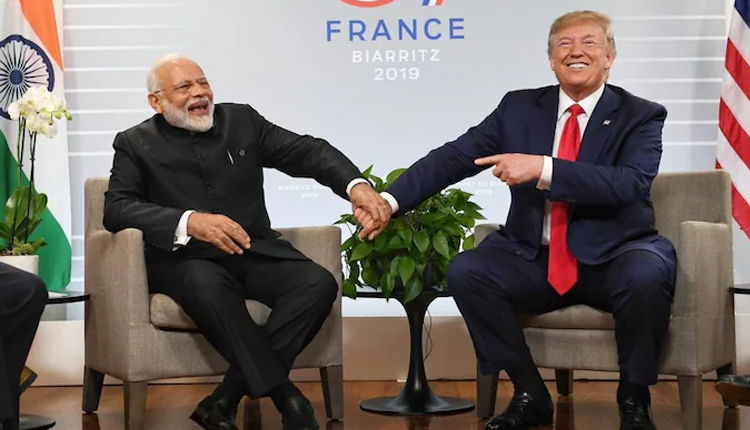New Delhi: Taking a cue from India’s precision operation Sindoor, the United States planned to use B-2 stealth bombers for precision bombing on the secretive Iranian nuclear facilities at Fordow, Natanz, and Isfahan on June 22, 2025; this precision attack significantly impacted Iran’s nuclear ambitions, as confirmed by U.S. officials regarding the strike.
Months in the making, the operation resembled India’s surgical strike against Pakistani-based terror camps in 2019 with their strike and return strategy. Guam-based U.S. Air Force B-2 Spirit stealth bombers stationed at the Andersen Air Force Base dropped twelve 30-thousand-pound GBU-57 Massive Ordnance Penetrator (MOP) bunker buster bombs in the Fordow that are buried 250 feet under the ground near Qom. At the same time, a group of 30 Tomahawk cruise missiles, which were launched by Navy submarines in the Arabian Sea, targeted Natanz and Isfahan as the major hubs within the Iranian uranium enrichment system.
In the Situation Room of the White House, President Trump described the operation as a spectacular military success on Truth Social, stating that he believed Fordow was completely destroyed. The attacks were planned and executed with the help of Israeli intelligence to defuse the nuclear capability of Iran after it launched missile attacks in Israel, killing 24 civilians. Over eight days, the IDF had weakened the air defences of Iran, and the U.S. was thus able to sneak in unnoticed.
The Atomic Energy Organisation of Iran responded that Fordow had actually been damaged minimally, with no leakage of radioactive materials, a fact supported by that of Saudi Arabia, which has authority in nuclear matters. Lt Gen (Retd) Tariq Ghaznavi said that the operation carried out by the U.S. is surgical, like the Indian strikes on Balakot, but its magnitude and boldness have taken a new phase. Vinod Khandare previously served as the Deputy Chief of the Integrated Defence Staff. He observed that the Americans’ use of stealth technology and bunker busters is similar to India’s use of accurate pinpoint bombs, specifically the Spice-2000 bombs.
The world is concerned about potential environmental fallout. Analysts say that a strike on the uranium enrichment laboratories could potentially cause seismic activity or even radioactive discharge, similar to the unconfirmed cases of geological shifts in Pakistan that occurred after the Indian attacks. The National Nuclear Safety System Centre of Iran noted the complete absence of radiation hazards, but the International Atomic Energy Agency (IAEA) is engaged in monitoring the situation.
Foreign Minister Abbas Araghchi promised a decisive retaliation, accusing the U.S. of breaching international law and insisting on an investigation in the UN Security Council. Hardliners, such as Hussain Shariatmadari, the editor of Kayhan, called for attacking the U.S. bases in Bahrain with missiles and the closure of the Strait of Hormuz, which is potentially the cause of a global oil crisis.
The operation underscores America’s unparalleled military power, mirroring India’s strategy. In the case of Iran, weighing its retaliation, the word waits to see whether it will further escalate the situation, and the consequence of the incident that India experienced reinforces the tippy-toe aspect between precise attacks and the geopolitical reasons for such an attack.



Comments are closed.